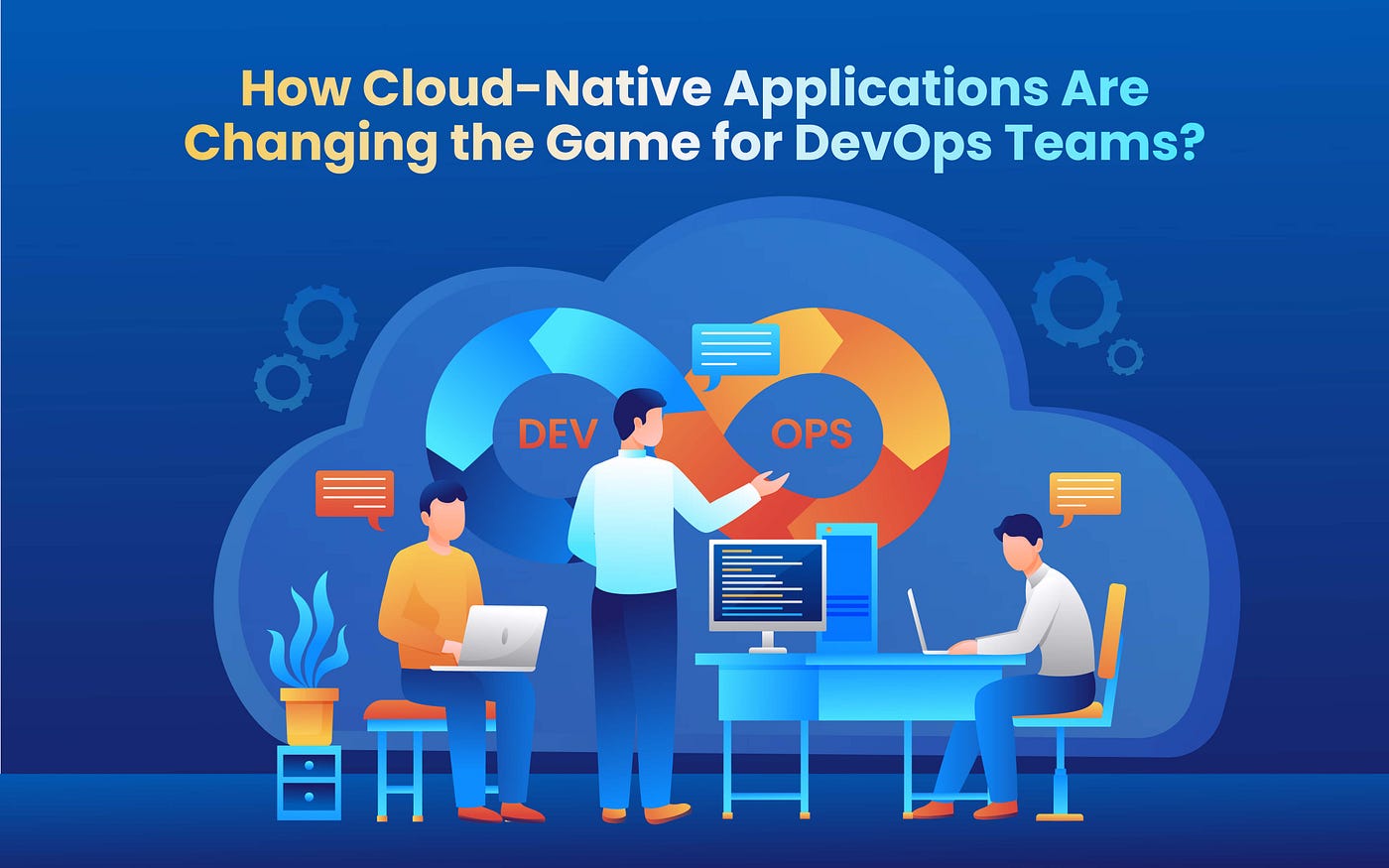-
Table of Contents
Streamlining Development and Deployment with Cloud-Native DevOps
Cloud-Native DevOps is an approach that combines cloud computing and DevOps principles to streamline the development and deployment of software applications. It involves building and running applications using cloud-native technologies and practices, such as containerization, microservices architecture, and continuous integration and delivery (CI/CD). By leveraging the scalability, flexibility, and automation capabilities of the cloud, organizations can accelerate the software development lifecycle, improve collaboration between development and operations teams, and deliver applications more efficiently and reliably. In this article, we will explore the key concepts and benefits of Cloud-Native DevOps and how it can help organizations achieve faster time-to-market, increased agility, and improved customer satisfaction.
Benefits of Cloud-Native DevOps for Efficient Development and Deployment
Cloud-Native DevOps: Streamlining Development and Deployment
Benefits of Cloud-Native DevOps for Efficient Development and Deployment
In today’s fast-paced digital landscape, businesses are constantly seeking ways to streamline their development and deployment processes. One approach that has gained significant traction is cloud-native DevOps. This innovative methodology combines the power of cloud computing with the efficiency of DevOps practices, resulting in faster and more reliable software development and deployment.
One of the key benefits of cloud-native DevOps is its ability to enhance the efficiency of the development process. By leveraging cloud infrastructure, developers can access the resources they need on-demand, eliminating the need for time-consuming hardware provisioning. This allows them to focus on writing code and developing features, rather than worrying about infrastructure management. Additionally, cloud-native DevOps enables developers to easily scale their applications as needed, ensuring optimal performance even during peak usage periods.
Another advantage of cloud-native DevOps is its ability to accelerate the deployment process. Traditional deployment methods often involve manual steps and complex configurations, which can lead to errors and delays. With cloud-native DevOps, deployment becomes automated and standardized, reducing the risk of human error and ensuring consistent results. This not only saves time but also improves the overall quality of the software being deployed.
Furthermore, cloud-native DevOps promotes collaboration and communication among development and operations teams. By breaking down silos and fostering a culture of collaboration, organizations can achieve faster feedback loops and more efficient problem-solving. This is particularly important in today’s agile development environment, where rapid iteration and continuous improvement are essential. With cloud-native DevOps, developers and operations teams can work together seamlessly, sharing insights and resolving issues in real-time.
Additionally, cloud-native DevOps enables organizations to adopt a microservices architecture, which further enhances development and deployment efficiency. Microservices allow applications to be broken down into smaller, independent components, each with its own dedicated resources. This modular approach enables developers to work on different parts of the application simultaneously, reducing development time and increasing productivity. Moreover, microservices can be deployed independently, allowing for faster and more frequent releases. This not only improves time-to-market but also enables organizations to respond quickly to changing customer needs and market demands.
Another significant benefit of cloud-native DevOps is its ability to improve the reliability and resilience of applications. By leveraging cloud infrastructure, organizations can take advantage of built-in redundancy and failover mechanisms, ensuring high availability and minimizing downtime. Additionally, cloud-native DevOps promotes the use of automated testing and monitoring tools, enabling organizations to detect and address issues proactively. This proactive approach to quality assurance helps prevent costly downtime and ensures a positive user experience.
In conclusion, cloud-native DevOps offers numerous benefits for efficient development and deployment. By leveraging cloud infrastructure, organizations can enhance the efficiency of their development processes and accelerate deployment. Furthermore, cloud-native DevOps promotes collaboration and communication among teams, enabling faster feedback loops and more efficient problem-solving. Additionally, the adoption of a microservices architecture further enhances development and deployment efficiency. Finally, cloud-native DevOps improves the reliability and resilience of applications, ensuring high availability and a positive user experience. As businesses continue to embrace digital transformation, cloud-native DevOps will undoubtedly play a crucial role in streamlining development and deployment processes.
Best Practices for Streamlining Development and Deployment in Cloud-Native DevOps
Cloud-Native DevOps: Streamlining Development and Deployment
In today’s fast-paced digital landscape, businesses are constantly seeking ways to streamline their development and deployment processes. One approach that has gained significant traction is Cloud-Native DevOps. This innovative methodology combines the power of cloud computing with the efficiency of DevOps practices to create a seamless and efficient software development and deployment pipeline.
At its core, Cloud-Native DevOps is all about leveraging the cloud infrastructure to build, test, and deploy applications. By utilizing cloud services, organizations can take advantage of the scalability, flexibility, and cost-effectiveness that the cloud offers. This allows for faster development cycles, improved collaboration, and reduced time-to-market.
One of the key best practices for streamlining development and deployment in Cloud-Native DevOps is the use of containerization. Containers provide a lightweight and portable way to package applications and their dependencies. By encapsulating the application and its dependencies into a single container, developers can ensure consistency across different environments, from development to production. This eliminates the “it works on my machine” problem and simplifies the deployment process.
Another best practice is the adoption of microservices architecture. In a microservices architecture, applications are broken down into smaller, loosely coupled services that can be developed, deployed, and scaled independently. This allows for greater agility and flexibility, as each service can be updated or replaced without affecting the entire application. Additionally, microservices enable teams to work in parallel, accelerating development cycles and reducing bottlenecks.
Continuous integration and continuous deployment (CI/CD) is another crucial aspect of Cloud-Native DevOps. CI/CD involves automating the build, test, and deployment processes to ensure that changes are quickly and reliably pushed to production. By automating these processes, organizations can reduce the risk of human error, improve code quality, and increase the speed of delivery. This enables teams to iterate rapidly and respond to customer feedback in real-time.
To further streamline development and deployment, organizations should embrace infrastructure as code (IaC). IaC involves managing infrastructure resources, such as servers, networks, and databases, through code. By treating infrastructure as code, organizations can version control their infrastructure configurations, automate provisioning and deployment, and ensure consistency across different environments. This eliminates manual configuration and reduces the risk of configuration drift, making deployments more reliable and reproducible.
In addition to these best practices, organizations should prioritize monitoring and observability in their Cloud-Native DevOps pipelines. Monitoring allows teams to proactively identify and address issues, ensuring the availability and performance of applications. Observability, on the other hand, provides deeper insights into the behavior of applications, enabling teams to understand and troubleshoot complex issues. By investing in robust monitoring and observability tools, organizations can detect and resolve issues before they impact end-users, improving the overall user experience.
In conclusion, Cloud-Native DevOps offers a powerful framework for streamlining development and deployment processes. By leveraging the cloud infrastructure, adopting containerization and microservices, implementing CI/CD, embracing IaC, and prioritizing monitoring and observability, organizations can create a seamless and efficient software development and deployment pipeline. This not only accelerates time-to-market but also improves collaboration, reduces costs, and enhances the overall quality of applications. As businesses continue to embrace digital transformation, Cloud-Native DevOps will undoubtedly play a crucial role in driving innovation and success.
Key Tools and Technologies for Successful Cloud-Native DevOps Implementation
Key Tools and Technologies for Successful Cloud-Native DevOps Implementation
In today’s fast-paced digital landscape, businesses are constantly seeking ways to streamline their development and deployment processes. Cloud-native DevOps has emerged as a powerful approach that combines the benefits of cloud computing and DevOps methodologies to achieve faster and more efficient software delivery. To successfully implement cloud-native DevOps, organizations need to leverage a range of key tools and technologies that enable seamless collaboration, automation, and scalability.
One of the fundamental tools for cloud-native DevOps is containerization. Containers provide a lightweight and portable environment that encapsulates an application and its dependencies. Docker, a popular containerization platform, allows developers to package their applications into containers, ensuring consistency across different environments. Containers enable easy deployment and scaling, making them an essential component of cloud-native DevOps.
To manage and orchestrate containers effectively, organizations often turn to container orchestration platforms like Kubernetes. Kubernetes provides a robust framework for automating the deployment, scaling, and management of containerized applications. It simplifies the process of managing large-scale container deployments, ensuring high availability and fault tolerance. With Kubernetes, organizations can easily scale their applications based on demand, improving overall efficiency and reducing operational overhead.
Continuous integration and continuous delivery (CI/CD) pipelines are another crucial aspect of cloud-native DevOps. CI/CD pipelines automate the process of building, testing, and deploying software, enabling rapid and frequent releases. Jenkins, a widely used open-source automation server, allows organizations to create and manage CI/CD pipelines. It integrates with various tools and technologies, facilitating seamless collaboration between development and operations teams. By automating the software delivery process, organizations can significantly reduce time-to-market and improve overall software quality.
Infrastructure as code (IaC) is another key technology that complements cloud-native DevOps. IaC allows organizations to define and manage their infrastructure using code, enabling reproducibility and scalability. Tools like Terraform and Ansible provide a declarative approach to infrastructure provisioning and configuration management. With IaC, organizations can easily spin up and tear down infrastructure resources, ensuring consistency and reducing manual errors. This aligns perfectly with the principles of cloud-native DevOps, where infrastructure is treated as code and can be version-controlled and automated.
Monitoring and observability are critical for ensuring the reliability and performance of cloud-native applications. Tools like Prometheus and Grafana provide powerful monitoring capabilities, allowing organizations to collect and analyze metrics, logs, and traces. These tools enable proactive monitoring, alerting, and troubleshooting, ensuring that any issues are identified and resolved quickly. By gaining insights into application performance and resource utilization, organizations can optimize their infrastructure and improve overall user experience.
In conclusion, successful implementation of cloud-native DevOps requires leveraging a range of key tools and technologies. Containerization, container orchestration platforms like Kubernetes, CI/CD pipelines, infrastructure as code, and monitoring and observability tools are all essential components of a streamlined development and deployment process. By adopting these tools and technologies, organizations can achieve faster time-to-market, improved scalability, and enhanced software quality. Cloud-native DevOps is revolutionizing the way businesses develop and deploy software, enabling them to stay competitive in today’s digital era.In conclusion, Cloud-Native DevOps is a methodology that aims to streamline the development and deployment processes by leveraging cloud technologies. It involves the use of containerization, microservices architecture, and automation tools to enable faster and more efficient software development and deployment. By adopting Cloud-Native DevOps practices, organizations can achieve greater scalability, flexibility, and resilience in their applications, leading to improved time-to-market and customer satisfaction.





